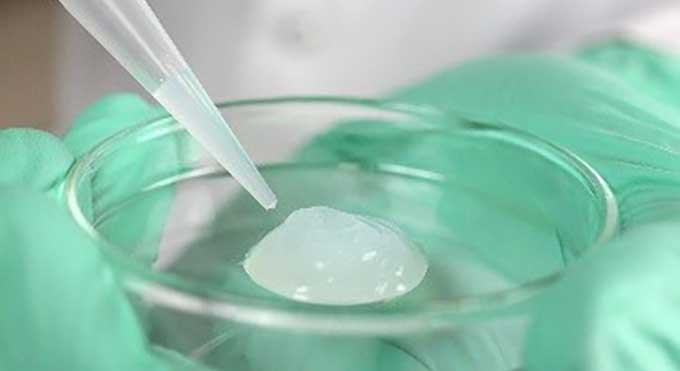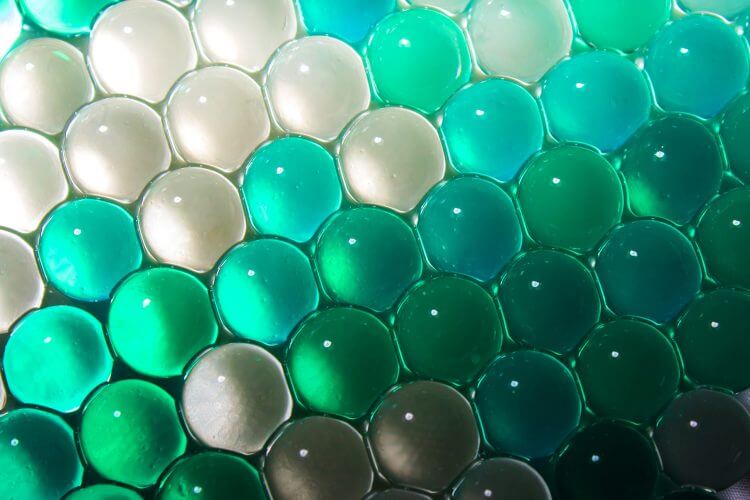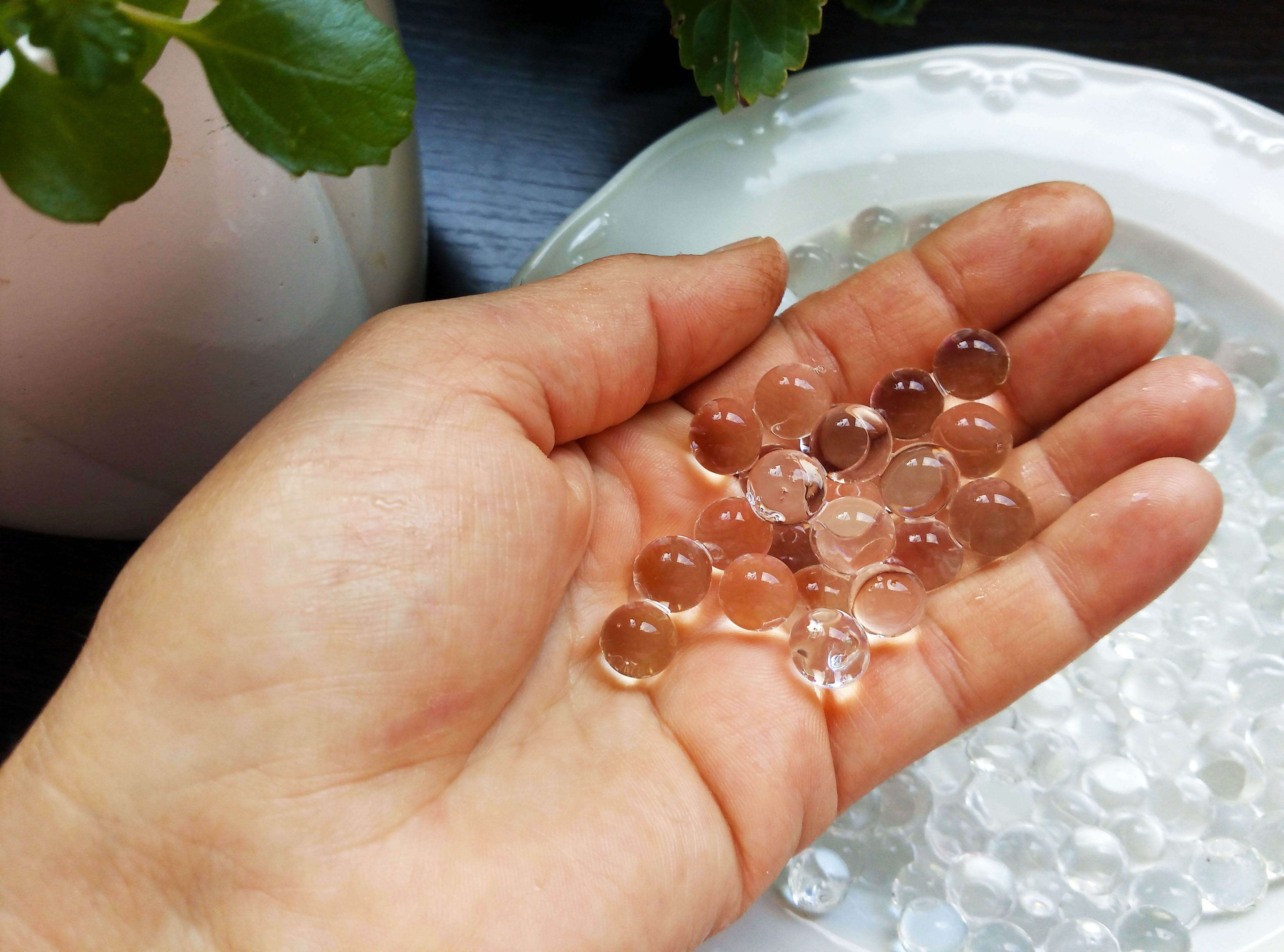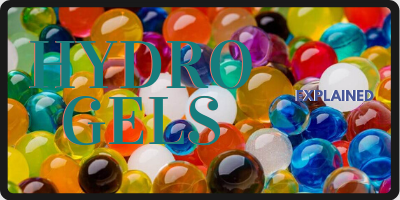Application Areas of Hydrogels - Nanografi Blog
Hydrogels are polymer networks with excellent absorption and swelling properties. In addition to their physical properties, their biocompatibility, biodegradability, and environmentally friendly nature are extremely important for applications. Hydrogels are used for medical applications such as drug delivery, tissue engineering, diagnostics, and optical lenses. They are also utilized as coatings, in electronic and optic applications.
Before Continue Check Our Other Article: Hydrogels Explained
Smart materials that show novel properties have gained great importance over the years. Scientists are constantly looking for ways to improve existing applications and resolve the standing problems of our world. Hydrogels have made quite an impact on material sciences from the first moment they have been developed. Hydrogels are polymeric networks that exhibit excellent swelling and shrinking properties by absorbing water or other biological fluids. Furthermore, hydrogels are biocompatible, biodegradable, and environmentally friendly. Biocompatibility of hydrogels has made them of great use in biomedical applications such as drug delivery, diagnostics, tissue engineering, and ophthalmic lenses. The responsive nature of hydrogels to external stimuli such as pH, temperature, solvent concentration, light, enzymes, and electric field has also been utilized in medical, optical, electronic, and coating applications.
Medical Applications
Hydrogels have been exploited by the medical industry because of their biocompatibility, non-toxic nature, biodegradability, high water content, good mechanical and thermal properties, and excellent responsive nature. They mimic the behavior of human organs in response to changes in pH, temperature, enzymes, ion concentration, and electric field. Hydrogels are mainly used for drug delivery, tissue engineering, diagnostics, and the development of ophthalmic lenses.

Drug Delivery
Conventional drug delivery requires the constant loading of active compounds to the body. This compromises patient compliance, efficiency and can lead to side effects due to high doses. Scientists have been developing different methods to obtain more efficient and safer drug delivery applications focusing on controlled and local drug delivery systems. Hydrogels are good candidates to achieve this goal. The high absorption capacity of hydrogels allows drug uptakes at excellent levels. The responsive nature of hydrogels to pH and temperature has the potential to aid local drug delivery applications. The hydrogel structure can be manipulated to release drug content in their structure under specific conditions so that active ingredients are delivered to desired tissues. Furthermore, the rate of drug release can be controlled by changing environmental conditions. For example, a new pH and temperature-sensitive hydrogel structure containing six acrylic groups, one cyclic phosphazene, and HAAP as cross-linker show drug release efficiency of 94.2% at pH 1.2 and 87% at pH 5.5. This hydrogel represents that drug release can be controlled by adapting the pH value. Xylan is an important component of hydrogels for controlled drug release since it is resistant against digestion in the stomach and intestines of humans. Moreover, the different shapes and size of polymer networks in hydrogels offers selective drug loading and drug release. This makes it possible to use dry networks or swollen polymers as drug delivery systems for oral, nasal, buccal, intestinal, vaginal, ocular and parenteral administration routes.
Tissue Engineering
Hydrogels have attracted attention in tissue engineering applications. Tissue engineering includes improving or substituting specific tissues or organs using engineered materials and synthetic techniques.Hydrogels have been used in cell transplantation and cartilage, bone, and soft muscle engineering. For example, hydrogel scaffolds can be used as bone fillers or wound healing. It is important that hydrogels used in tissue engineering have some specific properties such as mechanical strength, surface properties, biodegradability, and electroactivity. Mechanical strength is especially important for implant applications where damaged tissue is replaced with hydrogel scaffolds. Surface properties are important for the biocompatibility of hydrogel scaffolds. Hydrogels formed with natural and synthetic polymers are both used in tissue engineering applications. The prevalent natural polymers are keratin, beta-glucan, agarose, alginate, chitosan, collagen, fibrin, gelatine, and hyaluronic acid. Natural polymers have attracted attention since they are biocompatible and can easily be extracted from the tissues of the patient. The most widespread synthetic polymers for tissue engineering are poly (ethylene oxide), poly (vinyl alcohol), poly (acrylic acid), poly (propylene fumarate), and polypeptides.
Diagnostics
Diagnostics is indisputably one of the most important parts of modern medicine. Unfortunately, it includes expensive and hazardous applications. Many studies have focused on creating simpler, cheaper, and safer diagnostic methods to try and reduce costs while increasing accessibility. Hydrogels have recently been considered for suitable diagnostic applications due to their high water content, fluidic transport properties, and bio-congeniality. Incorporating functional groups into or onto the hydrogel network allows the conjugation of different dyes, reporter molecules or inorganic nanoparticles. Hydrogels provide stability and protection against harsh conditions to the materials they are hosting. For example, silver or gold nanoparticles inside the hydrogel network can be used in different imaging techniques. Additionally, hydrogels itself can be used in diagnostics. For example, hydrogels composed of cross-linked PMA can be employed as pH sensors in magnetic resonance imaging (MRI) without the need for any inorganic paramagnetic materials. Another important diagnostic application of hydrogels is glucose monitoring. Fluorescent polyacrylamide-based hydrogels are used to track glucose fluctuations in the blood. The interaction between glucose and fluorescent polyacrylamide-based hydrogels is reversible and very sensitive and does not require any power. Simply, as glucose concentration in the blood increases the fluorescence intensity of the microbeads increases.
Ophthalmic Lenses
Ophthalmic lenses include wearable contact lenses, implantable artificial corneas; intraocular lenses, and artificial vitreous bodies. Traditionally these lenses have been based on rigid materials such as glass, poly (methyl methacrylate), and polycarbonate. However, with the advances in hydrogel technology ophthalmic lenses have been mainly based on hydrogels. The softness, transparency, oxygen permeability, biocompatibility, and high water content of hydrogels blow conventional lenses out of the water. Hydrogels not only provide comfort but they also provide adjustable focus length by mimicking the shape change of the eye.

Hydrogel Coatings
Coatings are an integral part of any machinery. They provide ease of movement and protection against wear to the dynamic parts while providing protection against corrosion to surfaces. Even though high water content and slippery nature of hydrogels make it challenging to be used as coatings on machinery they can be utilized when appropriate adhesion is formed between hydrogels and engineering materials. According to different mechanisms of hydrogel adhesion, we classify hydrogel coatings into four types: physical attached, covalent anchored, interfacially interpenetrated, and mechanically interlocked hydrogel coatings.Physically attached hydrogel coatings are only based on weak interactions such as van der Waals interactions, hydrogen bonds, and hydrophobic interactions. These coatings are easy to detach. They have been commercially utilized as ultrasound hydrogel pads and hydrogel coatings on ECG electrodes. These hydrogel coatings reduce skin irritation and increase signal-to-noise ratios, due to their water contents and biocompatibility. Covalently anchored hydrogels offer better stability and stronger bonding properties compared to physically attached hydrogel coatings. They form stable covalent bonds with the surface of machinery. The formation of covalent bonds is made possible through surface functionalization. They also offer relatively longer application time. The covalently anchored hydrogels are commercially used on latex Foley catheter and surgical gloves. The basis of mechanically interlocked hydrogels is interlocking the hydrogel mechanically on rough porous surfaces. Based on this approach hydrogels are coated on glass, polyethylene, and sponge. Unlike physical attachment and covalent anchorage, interfacially interpenetrated hydrogels do not require surface functionalization. Surfaces that are permeable to polymer chains allow attachment on the molecular level. Currently, there are no commercial applications of this method.
Hydrogel Optics
High transparency and refractive index of hydrogels aid different optical applications. Hydrogels are mainly used in optic lenses, smart windows and displays, optical fibers, and bioassay matrices. Often, the introduction of nanostructures is required to increase the refractive index of hydrogels. Smart windows offering privacy, comfort, and energy-saving have been attracting attention. These windows require materials that can switch light absorption, scattering, and transmission properties. Not only hydrogels are found to provide these requirements for smart window applications but also they have the potential to be used in pressure-sensitive touch screens and electroluminescent displays. Hydrogels are also used to bring in biocompatibility to traditional optical fibers. These fibers are used in laser surgeries and light-activated therapies. The optical transparency, molecule permeability, and swelling properties of hydrogels are greatly utilized as transparent matrices. Hydrogels are used in expansion microscopy and antibody or gene-based labeling for structural analysis and observation. Proteins, nucleic acids, and cells are efficiently observed with the help of hydrogels.

Hydrogel Electronics
Hydrogels are electrical insulators since they lack mobile charges and charge carriers. In order to obtain electrical conductance several different materials such as ionic salts, electrically conductive micro- and nanomaterials, and conductive polymers are incorporated in the hydrogel network. Movement of mobile ionic salts such as Na+, Li+, and Cl− in the hydrogel matrices is activated by an electric field. These engineered hydrogels don’t lose their transparency and excellent mechanical properties. Electronic devices developed using ionically conductive hydrogels include diodes, sensors, actuators, signal transmitters, memristors, photovoltaic cells, and power sources. Silver nanowires, gold nanoparticles, carbon nanotubes, graphene, and liquid metals are used as fillers in hydrogels to increase electrical conductance. Hydrogels with silver nanowires are utilized in underwater acoustic detectors while graphene nanocomposite hydrogels are used in electrodes for EMG and ECG recordings. It is important to note that high carbon or metal contents can compromise the mechanical properties of hydrogels.
Click Image to Find Out About Nanocellulose
Hydrogels are novel materials with excellent biocompatibility, absorption ability, and responsive nature. The polymer network structure of hydrogels shows a significant volume change upon external changes such as pH, temperature, solvent concentration, and light. This responsive nature and absorption capacity of hydrogels are greatly utilized in medical, electronic, optic, and coating applications. The most known application of hydrogels is possibly the soft contact lenses we extensively use today. In addition to optical lenses, hydrogels have led to groundbreaking improvements in local drug delivery, tissue engineering, and diagnostic applications. The use of hydrogels in electronics, smart windows, and coating, however, needs to be improved to achieve widespread applications.
References
- 1.Mahinroosta, M., Farsangi, Z. J., Allahverdi, A., & Shakoori, Z. (2018). Hydrogels as intelligent materials: A brief review of synthesis, properties and applications. Materials today chemistry, 8, 42-55.
- 2.Liu, X., Liu, J., Lin, S., & Zhao, X. (2020). Hydrogel machines. Materials Today.
- 3.Curvello, R., Raghuwanshi, V. S., & Garnier, G. (2019). Engineering nanocellulose hydrogels for biomedical applications. Advances in colloid and interface science.
- 4.Sahua, N. K., Gilsb, P. S., Rayb, D., & Sahoo, P. K. (2012). ISSN 2277–7164 Hydrogels: A Review.
Recent Posts
-
Nanocomposites in Food Packaging
The utilization of nanocomposites in food packaging represents a significant advancement in the fiel …19th Apr 2024 -
What is the Difference Between 7075 and 6061 Aluminum Alloy?
When comparing 7075 aluminum alloy to 6061 aluminum alloy, it's essential to understand their disti …5th Apr 2024 -
Iron-Air Batteries: The Ultimate Guide
Iron-air batteries represent a significant breakthrough in energy storage technology, offering a sus …29th Mar 2024







